Abstract
Gastrointestinal subepithelial tumors (GSTs) are usually detected incidentally on endoscopic or radiologic examinations. In conventional endoscopy, a GST usually presents as a protuberant lesion with an intact mucosal surface. As the lesion is located beneath the mucosal layer of the gastrointestinal tract, conventional biopsy typically does not reveal the pathologic diagnosis. First, a GST should be differentiated from an extrinsic compression through the positional change of the patient during conventional endoscopic examination. In cases of GSTs originating from the gastrointestinal wall, endoscopic ultrasonography (EUS) can be beneficial for narrowing the differential diagnosis through delineation of echo findings and by determining the layer of origin. EUS findings can also help determine the management strategies for GSTs by making a differential diagnosis according to malignant potential.
Go to : 
A gastrointestinal subepithelial tumor (GST) is defined as a lesion that originates from a subepithelial layer, such as the muscularis mucosa, submucosa, or muscularis propria, in the wall of the gastrointestinal (GI) tract. Previously, GSTs were often described as submucosal tumors. However, the term “submucosal tumor” is a misnomer unless the tumor actually arises from the submucosal layer. Therefore, GST is a more accurate term describing any lesion that originates from beneath the epithelial layer. As the lesion may not necessarily be a “tumor”, a GI subepithelial mass may be a more appropriate description than a GST.
The prevalence of GSTs has been reported to be 0.36%–1.94%, which varies according to the characteristics of patients [1-3]. In retrospective studies of endoscopic screening in the normal population, the prevalence of GSTs was higher than that reported in studies in patients with GI symptoms. Although GSTs can induce GI symptoms such as pain, bleeding (presenting as melena, hematemesis, or hematochezia), weight loss, and a palpable mass in advanced disease, most patients with a GST do not present with disease-specific symptoms and their tumor is usually diagnosed incidentally. In Korea, biennial upper GI endoscopy or barium study is recommended for the general population aged >40 years, as part of a national screening program for gastric cancer, during which most cases of GST are incidentally diagnosed. The stomach is the most common organ involved, followed by the esophagus, colon, and small bowel [4].
GSTs are primarily diagnosed using conventional endoscopy. As the accurate diagnosis of a GST is generally difficult with conventional endoscopy alone, endoscopic ultrasonography (EUS) is beneficial for the determination of the layer of origin, size, internal echo characteristics, and interaction with adjacent structures [5,6]. In this review, the current status of EUS for the diagnosis of GSTs will be discussed.
Go to : 
GSTs usually present as protuberant lesions with an intact mucosal surface. Their size can vary from millimeters to >10 cm. Although the mucosal surface appears normal in most cases, erosion or ulcer can be present especially in larger lesions. Mucosal folds surrounding the lesion can be present in large lesions (“bridging fold”) (Fig. 1).
The initial endoscopic differential diagnosis of a GST determines whether the lesion originates from the GI tract or is due to extrinsic compression. Small GSTs <2 cm usually move with forceps manipulation along the wall (“rolling sign”). Soft GSTs such as lipomas can be compressed with forceps (“pillow sign”). In cystic GSTs such as lymphangiomas, pressing with forceps can cause the fluid content to spread out (“cushion sign”). If a large GST disappears after a positional change of the patient during examination, then the lesion is considered an extrinsic compression rather than a GST from the GI tract (Fig. 2).
Conventional endoscopic biopsy is not beneficial for tissue diagnosis because it can acquire only tissue from the epithelial layer rather than subepithelial tissue. Therefore, routine conventional endoscopic biopsy is not recommended for the pathologic diagnosis of GSTs. In cases of tumors that originate from the muscularis mucosa or superficial submucosa, such as neuroendocrine tumors or a heterotopic pancreas, conventional endoscopic biopsy can be beneficial to obtain the pathologic diagnosis; however, “stacked” or “bite-on-bite” biopsies are often required to obtain tissue from below the mucosal layer. Further, the pathologic diagnosis can be made through tissue acquisition from the ulcer base of a GST such as a gastrointestinal stromal tumor (GIST).
Extrinsic compression usually presents as a large subepithelial lesion. The etiologies of extrinsic compression in the stomach include spleen, liver, hepatic, or renal cysts; lymph-adenopathy; and gallbladder and pancreatic masses [7]. In the esophagus, compression from the aortic arch, heart, mediastinal masses, and bronchi can present as an extrinsic compression [8]. Uterine, ovarian, appendiceal, pelvic, or prostate masses can cause extrinsic compression in the colon [9]. When extrinsic compression is suspected, EUS or computerized tomography (CT) can be beneficial to identify the etiology.
Go to : 
EUS is the most valuable diagnostic modality for GSTs. When performing EUS, the first step is to determine whether the GST originates from the GI wall or is due to extrinsic compression from an adjacent organ or mass. If it is determined to be an intramural mass, the layer of origin should be discriminated, and the size, margin, echogenicity, and presence of cystic or calcific changes should be documented to aid in narrowing the differential diagnosis (Table 1).
Endoscopic Ultrasonographic Findings of Gastric Subepithelial Tumors
GISTs are the most common GSTs, and occur most frequently in the stomach, followed by the small bowel and colon [10]. On EUS imaging, GISTs are usually well-demarcated, round, homogeneous, and hypoechoic lesions originating from the muscularis propria, or rarely from the muscularis mucosa (Fig. 3) [11]. Irregular margins or multiple cystic changes can be seen in large tumors. As GISTs metastasize through hematogenous spread, regional lymphadenopathy is rare even in metastatic cases. Large tumor size, presence of ulcer and/or cystic change, and an irregular tumor margin are known risk factors of malignant change of GISTs [12,13]. However, the mitotic index and malignant risk were not different between tumors 2 cm and 5 cm in size in a previous study [14].
Leiomyomas show similar endoscopic and EUS findings to GISTs, which makes the differentiation of these tumors difficult. On EUS imaging, leiomyomas have a similar appearance to GISTs (round, homogeneous, and hypoechoic with smooth margins). They also originate from the muscularis mucosa or muscularis propria. Although GISTs are rarely found in the esophagus, leiomyomas are frequently detected in the esophagus and upper part of the stomach [15].
A heterotopic pancreas is pancreatic tissue located at a site other than the pancreas itself. The stomach is the most common site, followed by the duodenum. On EUS imaging, a heterotopic pancreas appears as an irregular and heterogeneous mass with a mixed echotexture within the submucosa with extension to the muscularis mucosa or muscularis propria (Fig. 4) [16]. A lipoma presents as a well-demarcated and hyperechoic mass originating from the submucosa on EUS imaging [16]. A neuroendocrine tumor usually presents as a well-demarcated and hypoechoic mass originating from the muscularis mucosa and submucosa on EUS imaging (Fig. 5) [16].
EUS is the most beneficial modality to differentiate the layer of origin, measure the size accurately, and investigate the echotexture of GSTs. CT scans can be used to image large GSTs when they are beyond the measurement capability of EUS, or to better define possible invasion to adjacent or distant organs.
Go to : 
All GSTs do not have a malignant potential. GISTs and neuroendocrine tumors have a malignant potential, whereas leiomyomas and heterotopic pancreas do not. However, to determine whether a GST has a malignant potential, tissue must be acquired, typically through fine needle aspiration (FNA) or fine needle biopsy (FNB) [17]. Once tissue has been acquired from the GST, a definitive pathologic diagnosis is possible. The malignant potential of GISTs can be determined by evaluating the tumor size and mitotic index [10]. However, determining the mitotic index typically requires resection of the tumor. Although all GISTs can have a malignant potential, a GIST with a very low risk rarely has a malignant potential and does not always need to be resected. Therefore, serial follow-up can be more appropriate than resection for suspicious gastric GISTs that are <2 cm in size with low-risk features on EUS imaging (well-demarcated borders with a homogeneous hypoechoic echotexture). As small GISTs <2 cm in the small bowel and colon can be malignant, resection should be considered irrespective of the tumor size. Neuroendocrine tumors have a malignant potential and should be considered for endoscopic or surgical resection.
In cases in which it has been determined that the GST is a benign tumor, resection is not recommended without evidence of GST-related symptoms such as bleeding, pain, ulcer, obstruction, or a palpable mass. Most incidental GSTs do not cause clinical symptoms and are typically stable in size on long-term follow-up [1,3]. In a previous long-term follow-up study evaluating the natural history of small incidental GSTs, >95% of the tumors had no change in size during follow-up and malignant change was very rare [1].
Go to : 
Incidental GSTs can be frequently encountered with increased screening endoscopy. Many features of GSTs can be characterized on endoscopic examination; however, EUS imaging provides further information about the size, echotexture, and layer of origin, which can help narrow the differential diagnosis and aid in further management strategies. If a lesion with a malignant potential is found in the differential diagnosis, acquisition of tissue for pathologic diagnosis through FNA or FNB should be pursued.
Go to : 
REFERENCES
1. Song JH, Kim SG, Chung SJ, Kang HY, Yang SY, Kim YS. Risk of progression for incidental small subepithelial tumors in the upper gastrointestinal tract. Endoscopy. 2015; 47:675–679.

2. Hedenbro JL, Ekelund M, Wetterberg P. Endoscopic diagnosis of submucosal gastric lesions. The results after routine endoscopy. Surg Endosc. 1991; 5:20–23.
3. Lim YJ, Son HJ, Lee JS, et al. Clinical course of subepithelial lesions detected on upper gastrointestinal endoscopy. World J Gastroenterol. 2010; 16:439–444.

4. Nishida T, Kawai N, Yamaguchi S, Nishida Y. Submucosal tumors: comprehensive guide for the diagnosis and therapy of gastrointestinal submucosal tumors. Dig Endosc. 2013; 25:479–489.

5. Gong EJ, Kim DH. Endoscopic ultrasonography in the diagnosis of gastric subepithelial lesions. Clin Endosc. 2016; 49:425–433.

6. Moon JS. Role of endoscopic ultrasonography in guiding treatment plans for upper gastrointestinal subepithelial tumors. Clin Endosc. 2016; 49:220–225.

7. Kim YW, Kim GH, Kim DU, et al. The clinical significance of extraluminal compressions according to the site of the stomach. Korean J Gastrointest Endosc. 2009; 39:125–130.
8. Pyeon SI, Kim GH, Yoon JB, Jeon HK, Lee BE. Clinical significance of extraluminal compressions according to the site of the esophagus. Korean J Helicobacter Up Gastrointest Res. 2017; 17:127–131.

10. Miettinen M, Makhlouf H, Sobin LH, Lasota J. Gastrointestinal stromal tumors of the jejunum and ileum: a clinicopathologic, immunohistochemical, and molecular genetic study of 906 cases before imatinib with long-term follow-up. Am J Surg Pathol. 2006; 30:477–489.
11. Hwang JH, Kimmey MB. The incidental upper gastrointestinal subepithelial mass. Gastroenterology. 2004; 126:301–307.

12. Brand B, Oesterhelweg L, Binmoeller KF, et al. Impact of endoscopic ultrasound for evaluation of submucosal lesions in gastrointestinal tract. Dig Liver Dis. 2002; 34:290–297.

13. Palazzo L, Landi B, Cellier C, Cuillerier E, Roseau G, Barbier JP. Endosonographic features predictive of benign and malignant gastrointestinal stromal cell tumours. Gut. 2000; 46:88–92.

14. Kim MN, Kang SJ, Kim SG, et al. Prediction of risk of malignancy of gastrointestinal stromal tumors by endoscopic ultrasonography. Gut Liver. 2013; 7:642–647.

15. Hwang JH, Rulyak SD, Kimmey MB. American Gastroenterological Association Institute technical review on the management of gastric subepithelial masses. Gastroenterology. 2006; 130:2217–2228.

Go to : 




 PDF
PDF Citation
Citation Print
Print



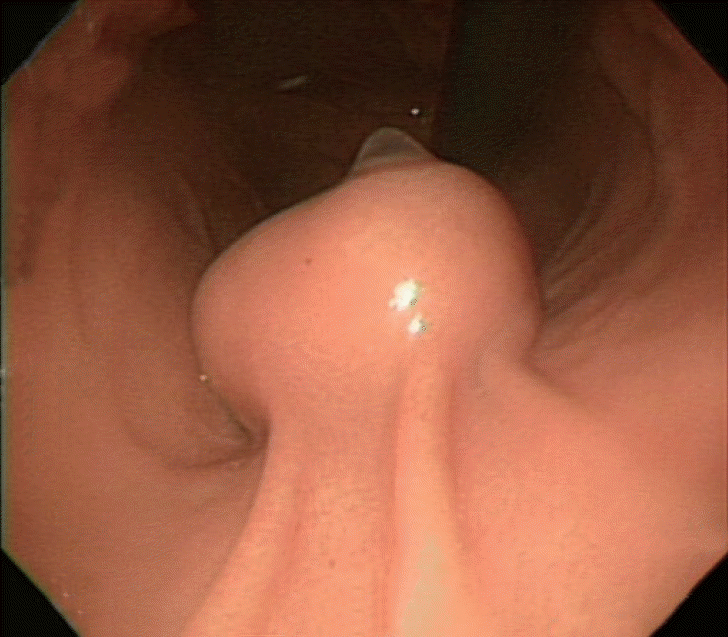
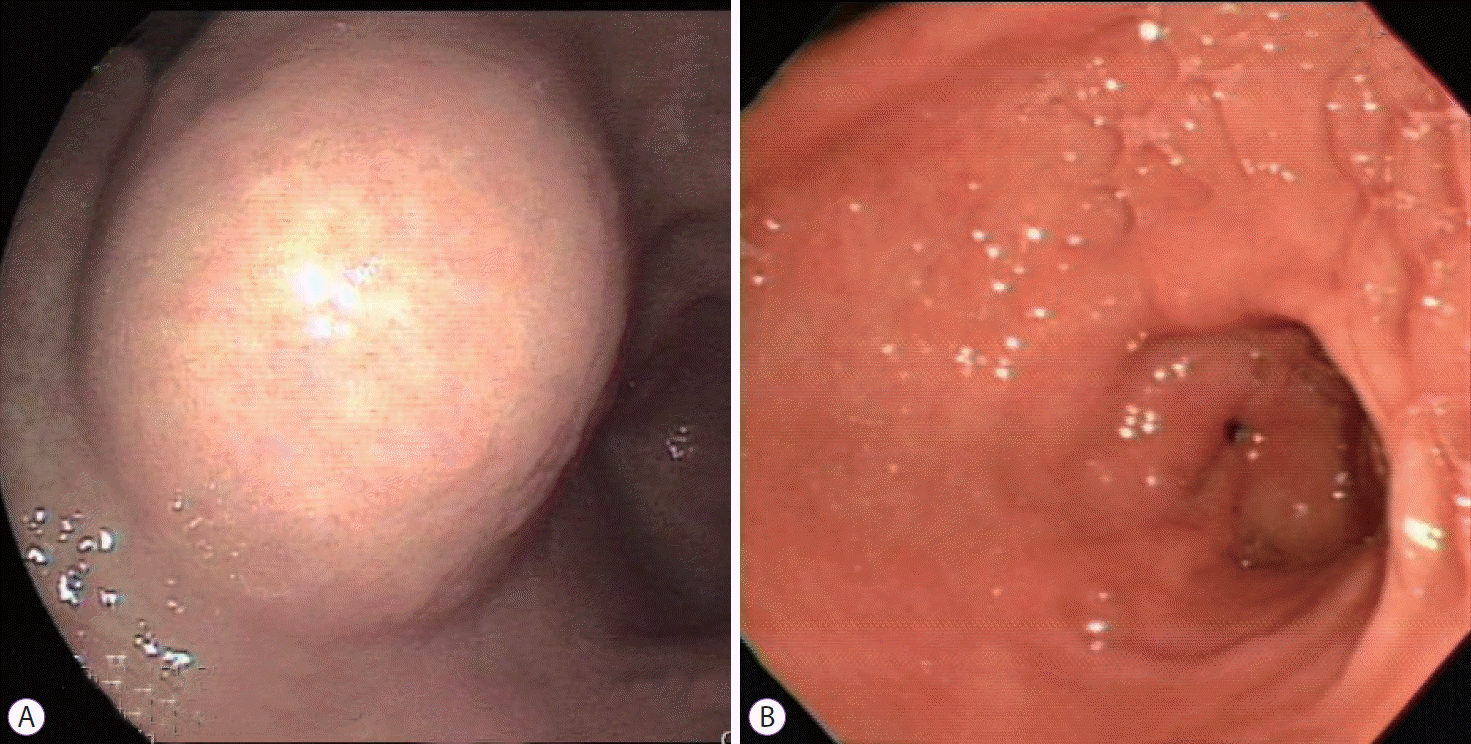
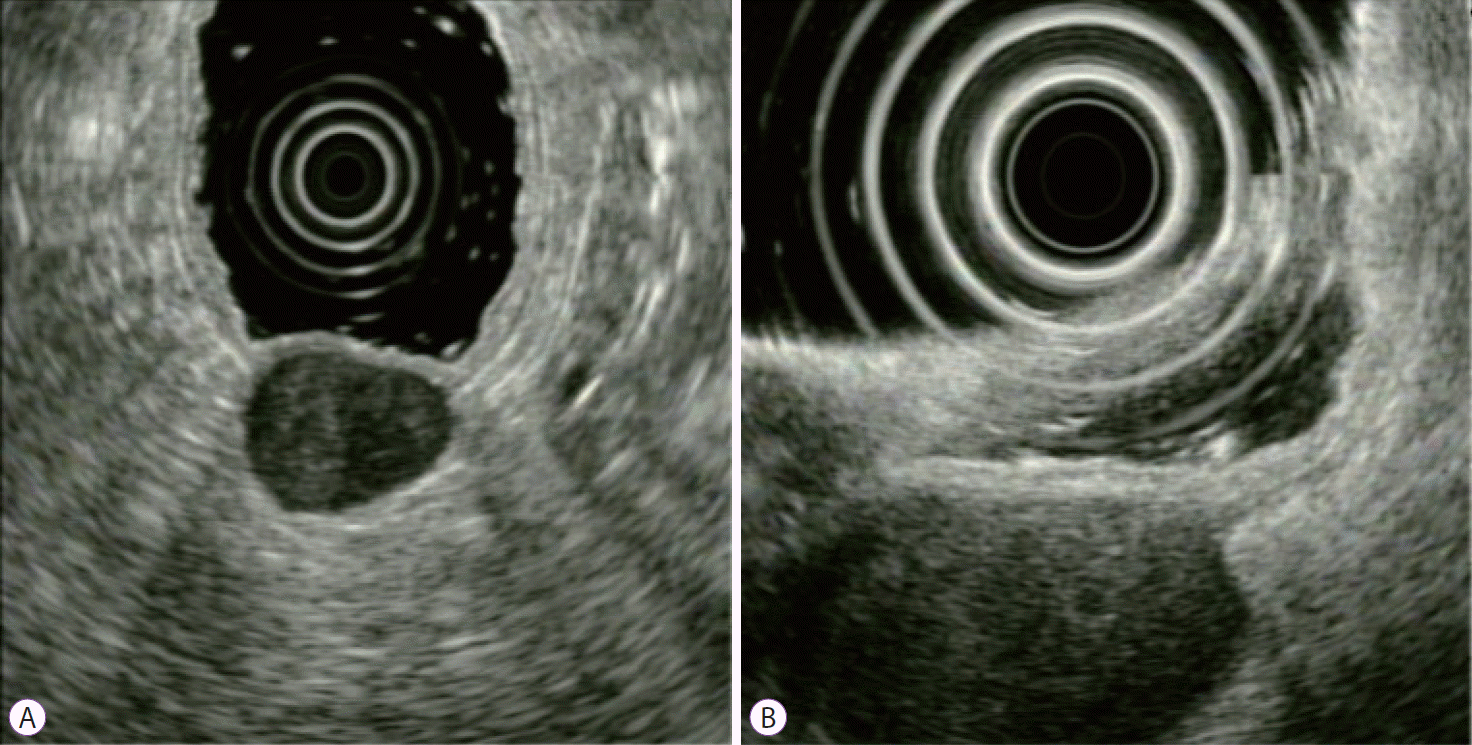
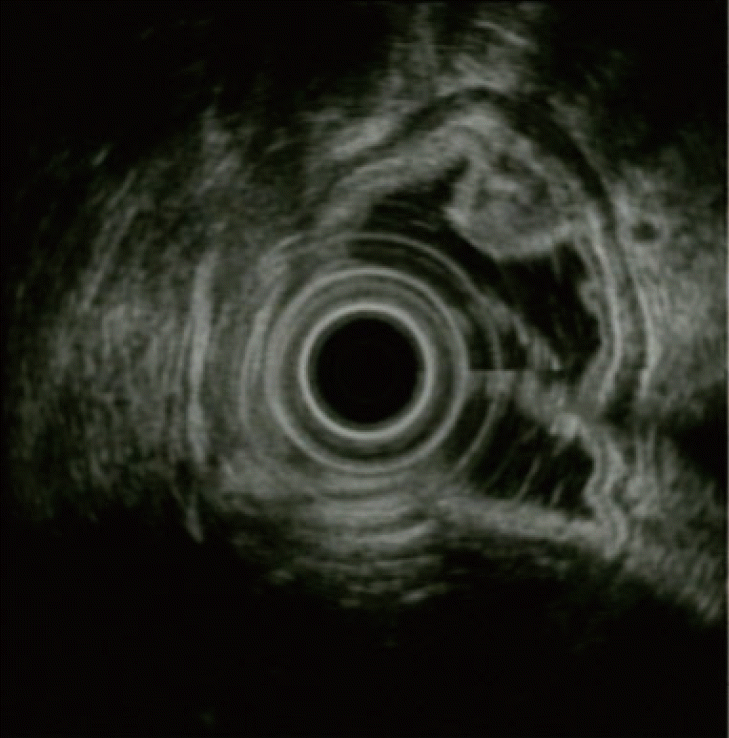
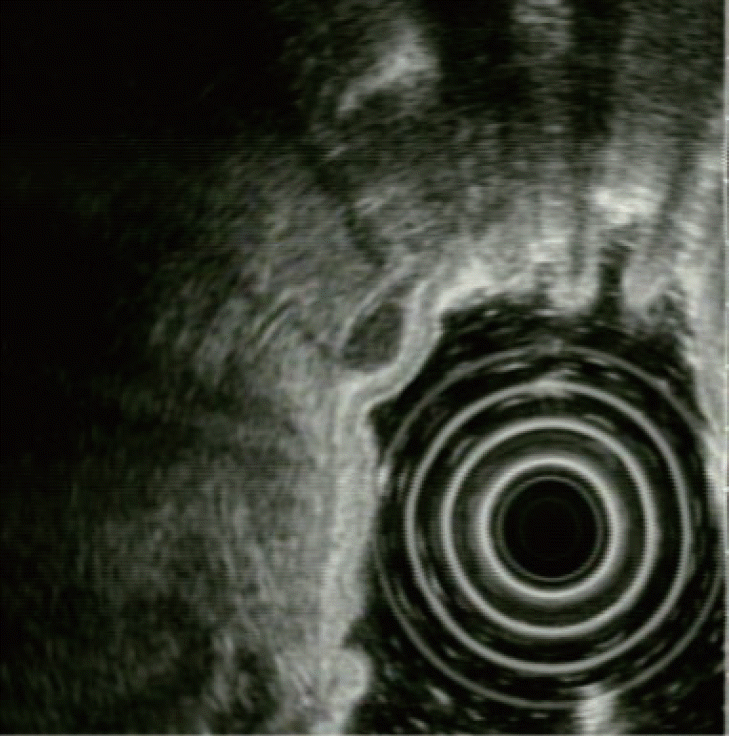
 XML Download
XML Download